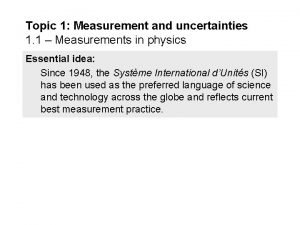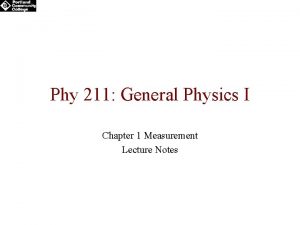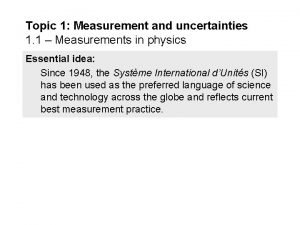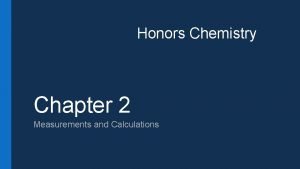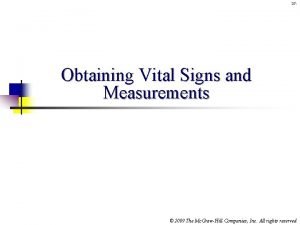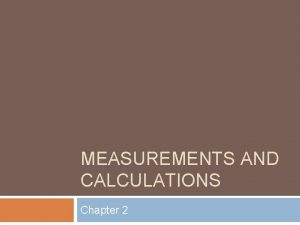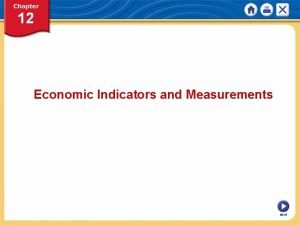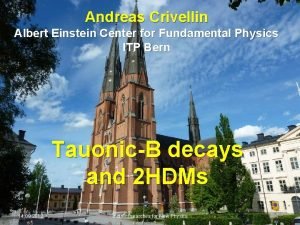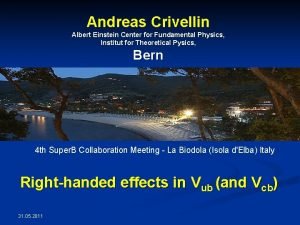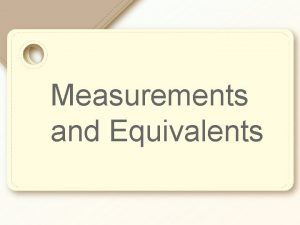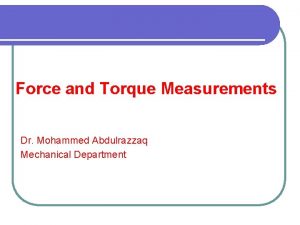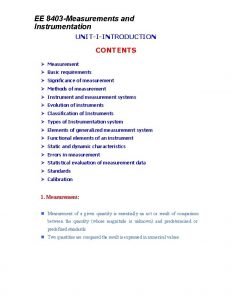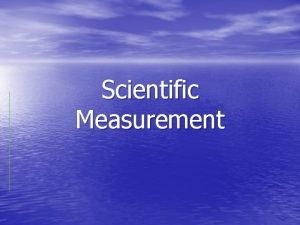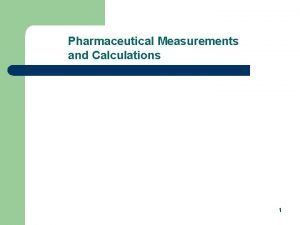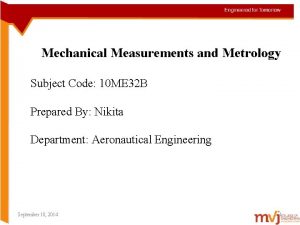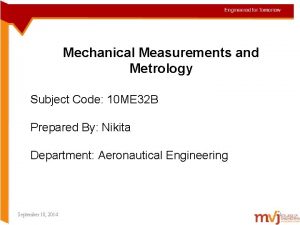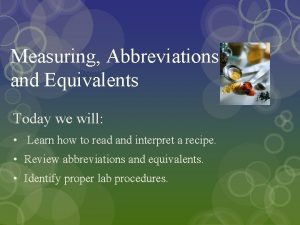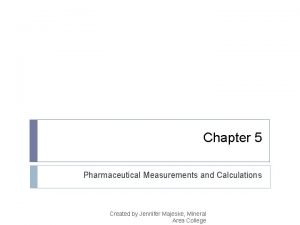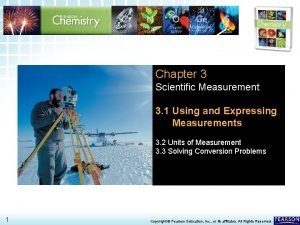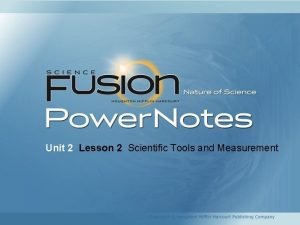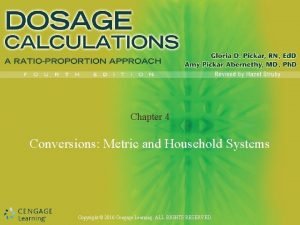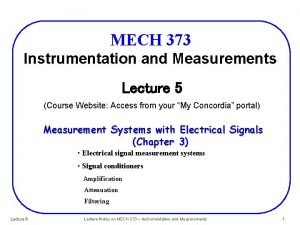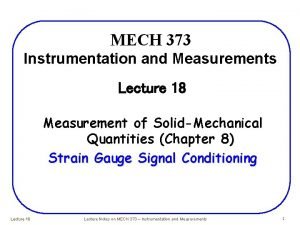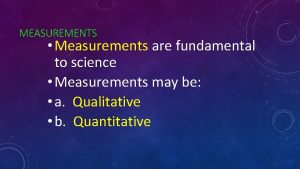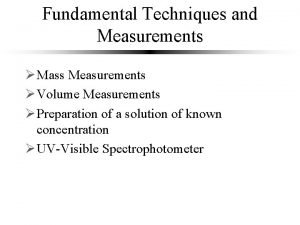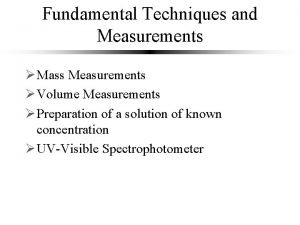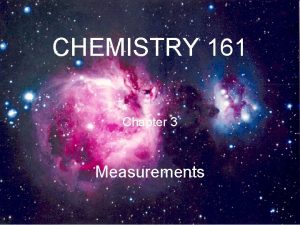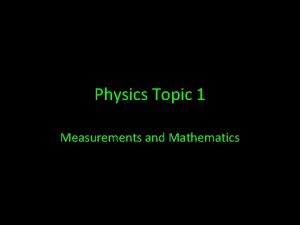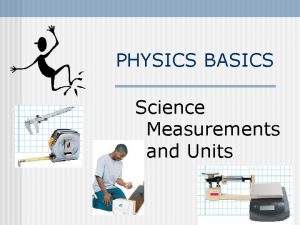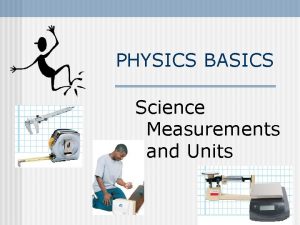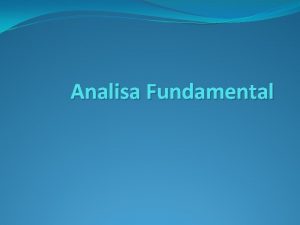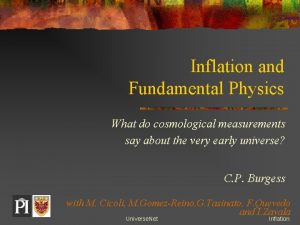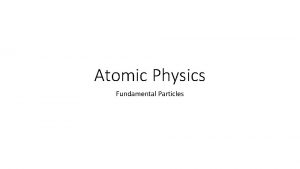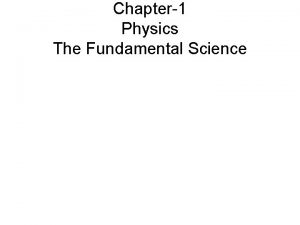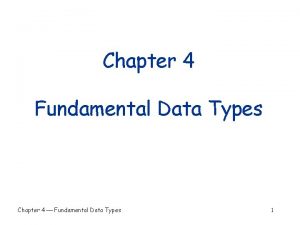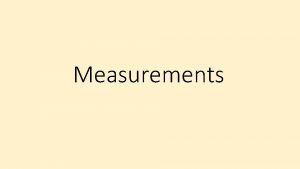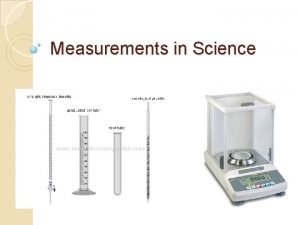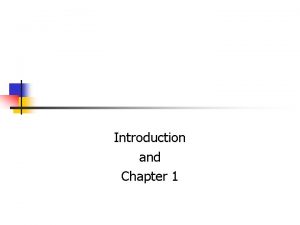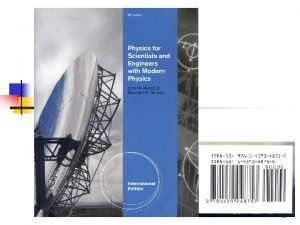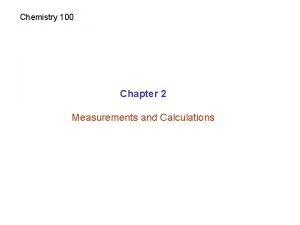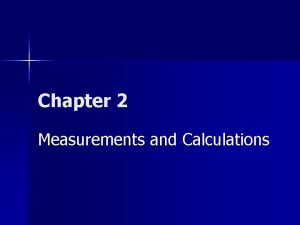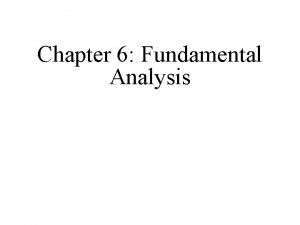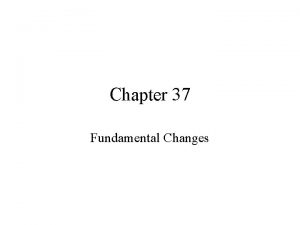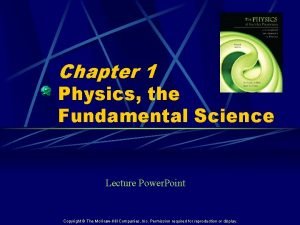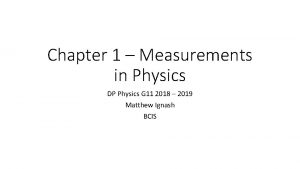Chapter 1 Physics and Measurements Physics Fundamental Science
































- Slides: 32

Chapter 1 Physics and Measurements

Physics Fundamental Science; § concerned with the fundamental principles of the Universe. § foundation of other physical sciences. § has simplicity of fundamental concepts. Prof Dr Ahmet ATAÇ Introduction

Physics, cont. Physics is divided into six major areas: § Classical Mechanics. § Relativity. § Thermodynamics. § Electromagnetism. § Optics. § Quantum Mechanics. Prof Dr Ahmet ATAÇ Introduction

Classical Physics Mechanics and electromagnetism are basic to all other branches of classical and modern physics. Classical physics § Developed before 1900 § First part of text deals with Classical Mechanics § Also called Newtonian Mechanics or Mechanics Modern physics § From about 1900 to the present Prof Dr Ahmet ATAÇ Introduction

Objectives of Physics To find the limited number of fundamental laws that govern natural phenomena To use these laws to develop theories that can predict the results of future experiments Express the laws in the language of mathematics § Mathematics provides the BRİDGE between theory and experiment. Prof Dr Ahmet ATAÇ Introduction

Theory and Experiments Should complement each other When a discrepancy occurs, theory may be modified or new theories formulated. § A theory may apply to limited conditions. § Example: Newtonian Mechanics is confined to objects traveling slowly with respect to the speed of light. § Try to develop a more general theory Prof Dr Ahmet ATAÇ Introduction

Classical Physics Overview Classical physics includes principles in many branches developed before 1900 Mechanics § Major developments by NEWTON, NEWTON and continuing through the 18 th century Thermodynamics, optics and electromagnetism § Developed in the latter part of the 19 th century § Apparatus for controlled experiments became available Prof Dr Ahmet ATAÇ Introduction

Modern Physics Began near the end of the 19 th century Phenomena that could not be explained by classical physics Includes theories of relativity and quantum mechanics Prof Dr Ahmet ATAÇ Introduction

Special Relativity Correctly describes motion of objects moving near the speed of light Modifies the traditional concepts of space, time, and energy Shows the speed of light is the upper limit for the speed of an object Shows mass and energy are related Prof Dr Ahmet ATAÇ Introduction

Quantum Mechanics Formulated to describe physical phenomena at the atomic level Led to the development of many practical devices Prof Dr Ahmet ATAÇ Introduction

Measurements Used to describe natural phenomena Each measurement is associated with a physical quantity Need defined standards Characteristics of standards for measurements § Readily accessible § Possess some property that can be measured reliably § Must yield the same results when used by anyone anywhere § Cannot change with time Prof Dr Ahmet ATAÇ Section 1. 1

Standards of Fundamental Quantities Standardized systems § Agreed upon by some authority, usually a governmental body SI – Systéme International § Agreed to in 1960 by an international committee § Main system used in this text Prof Dr Ahmet ATAÇ Section 1. 1

Fundamental Quantities and Their Units Quantity SI Unit Length meter Mass kilogram Time second Temperature Kelvin Electric Current Ampere Luminous Intensity Candela Amount of Substance mole Prof Dr Ahmet ATAÇ Section 1. 1

Quantities Used in Mechanics In mechanics, three fundamental quantities are used: § Length § Mass § Time All other quantities in mechanics can be expressed in terms of the three fundamental quantities. Prof Dr Ahmet ATAÇ Section 1. 1

Length is the distance between two points in space. Units § SI – meter, m Defined in terms of a meter – the distance traveled by light in a vacuum during a given time Prof Dr Ahmet ATAÇ Section 1. 1

Mass Units § SI – kilogram, kg Defined in terms of a kilogram, based on a specific cylinder kept at the International Bureau of Standards Prof Dr Ahmet ATAÇ Section 1. 1

Standard Kilogram Prof Dr Ahmet ATAÇ Section 1. 1

Time Units § seconds, s Defined in terms of the oscillation of radiation from a cesium atom Prof Dr Ahmet ATAÇ Section 1. 1

Reasonableness of Results When solving a problem, you need to check your answer to see if it seems reasonable. Reviewing the tables of approximate values for length, mass, and time will help you test for reasonableness. Prof Dr Ahmet ATAÇ Section 1. 1

Number Notation When writing out numbers with many digits, spacing in groups of three will be used. § No commas § Standard international notation Examples: § 25 100 § 5. 123 456 789 12 Prof Dr Ahmet ATAÇ Section 1. 1

US Customary System Still used in the US, but text will use SI Prof Dr Ahmet ATAÇ Quantity Unit Length foot Mass slug Time second Section 1. 1

Prefixes correspond to powers of 10. Each prefix has a specific name. Each prefix has a specific abbreviation. The prefixes can be used with any basic units. They are multipliers of the basic unit. Examples: § 1 mm = 10 -3 m § 1 mg = 10 -3 g Prof Dr Ahmet ATAÇ Section 1. 1

Prefixes, cont. Prof Dr Ahmet ATAÇ Section 1. 1

Fundamental and Derived Units Derived quantities can be expressed as a mathematical combination of fundamental quantities. Examples: § Area § A product of two lengths § Speed § A ratio of a length to a time interval § Density § A ratio of mass to volume Prof Dr Ahmet ATAÇ Section 1. 1

Basic Quantities and Their Dimension has a specific meaning – it denotes the physical nature of a quantity. Dimensions are often denoted with square brackets. § Length [L], § Mass [M], § Time [T]. Prof Dr Ahmet ATAÇ Section 1. 3

Dimensions and Units Each dimension can have many actual units. Table show the dimensions and units of some derived quantities Prof Dr Ahmet ATAÇ Section 1. 3

Dimensional Analysis Technique; to check the correctness of an equation or to assist in deriving an equation. Dimensions (length, mass, time, combinations) can be treated as algebraic quantities. § Add, subtract, multiply, divide. . Both sides of equation must have the same dimensions. Any relationship can be correct only if the dimensions on both sides of the equation are the same. Cannot give numerical factors: this is its limitation Prof Dr Ahmet ATAÇ Section 1. 3

Dimensional Analysis, example Given the equation: x = ½ at 2 Check dimensions on each side: The T 2’s cancel, leaving L for the dimensions of each side. § The equation is dimensionally correct. § There are no dimensions for the constant. Prof Dr Ahmet ATAÇ Section 1. 3

Dimensional Analysis to Determine a Power Law Determine powers in a proportionality § Example: find the exponents in the expression § You must have lengths on both sides. § Acceleration has dimensions of L/T 2 § Time has dimensions of T. § Analysis gives Prof Dr Ahmet ATAÇ Section 1. 3

Symbols The symbol (used in an equation) is not necessarily, the symbol used for its dimension. Some quantities have one symbol (used consistently). consistently § For example, time is t virtually all the time. Some quantities have many symbols used, depending upon the specific situation. § For example, lengths may be x, y, z, r, d, h, etc. The dimensions will be given with a CAPİTALİZED, non-italic letter. The algebraic symbol will be italicized. Prof Dr Ahmet ATAÇ Section 1. 3

Conversion of Units When units are not consistent, you may need to convert to appropriate ones. According to list of conversion factors. Units can be treated like algebraic quantities that cancel each other out. Prof Dr Ahmet ATAÇ Section 1. 4

Conversion Always include units for every quantity, you can carry the units through the entire calculation. § Will help detect possible errors Multiply original value by a ratio equal to one. Example: § Note the value inside the parentheses is equal to 1, since 1 inch is defined as 2. 54 cm. Prof Dr Ahmet ATAÇ Section 1. 4
 Measurement topic
Measurement topic General physics chapters
General physics chapters General physics 1 measurements
General physics 1 measurements Measurements in physics
Measurements in physics Favorite lesson in science
Favorite lesson in science Chapter 2 measurements and calculations
Chapter 2 measurements and calculations Chapter 37 vital signs and measurements true or false
Chapter 37 vital signs and measurements true or false What are the 8 vital signs?
What are the 8 vital signs? How to calculate percent error in chemistry
How to calculate percent error in chemistry Chapter 12 economic indicators and measurements
Chapter 12 economic indicators and measurements What are the 3 fundamental principles of fingerprints?
What are the 3 fundamental principles of fingerprints? Albert einstein center for fundamental physics
Albert einstein center for fundamental physics Albert einstein center for fundamental physics
Albert einstein center for fundamental physics Measurements equivalents and adjustments
Measurements equivalents and adjustments Force and torque measurements
Force and torque measurements Ee8403 measurements and instrumentation
Ee8403 measurements and instrumentation Temperature is an anthropometric measurement
Temperature is an anthropometric measurement 7.4.7 - quick check: angle measures and segment lengths
7.4.7 - quick check: angle measures and segment lengths For adult
For adult Scientific measurements
Scientific measurements Pharmaceutical measurements and calculations
Pharmaceutical measurements and calculations Working principle of tool makers microscope
Working principle of tool makers microscope Metrology and measurements subject code
Metrology and measurements subject code Measuring abbreviations
Measuring abbreviations Pharmaceutical measurements and calculations
Pharmaceutical measurements and calculations Units physical quantities and measurements
Units physical quantities and measurements Using and expressing measurements
Using and expressing measurements Unit 2 lesson 2 scientific notation
Unit 2 lesson 2 scientific notation Module 7 weights and measurements
Module 7 weights and measurements Metric, apothecary and household conversion chart
Metric, apothecary and household conversion chart Instrumentation and measurements
Instrumentation and measurements Instrumentation and measurements
Instrumentation and measurements Using and expressing measurements
Using and expressing measurements
